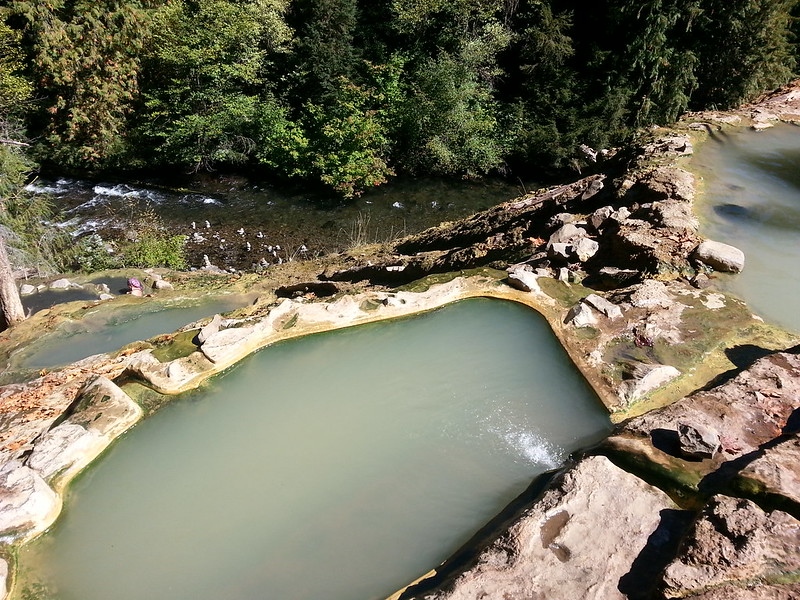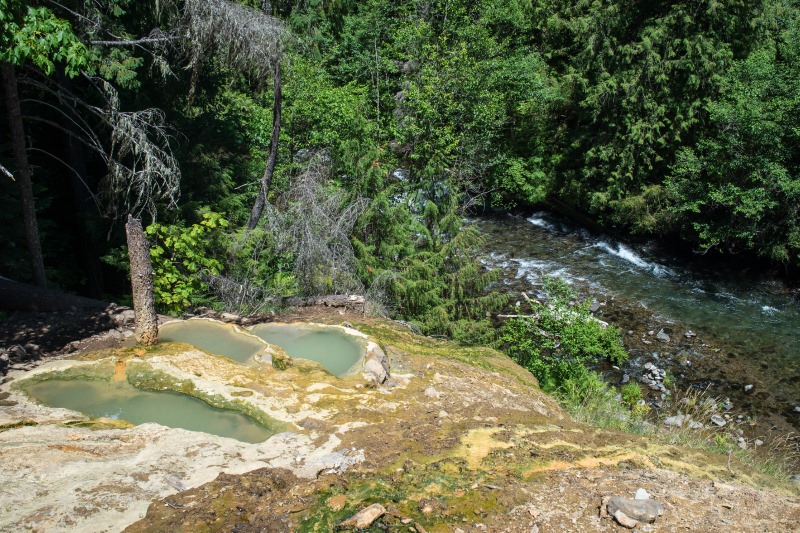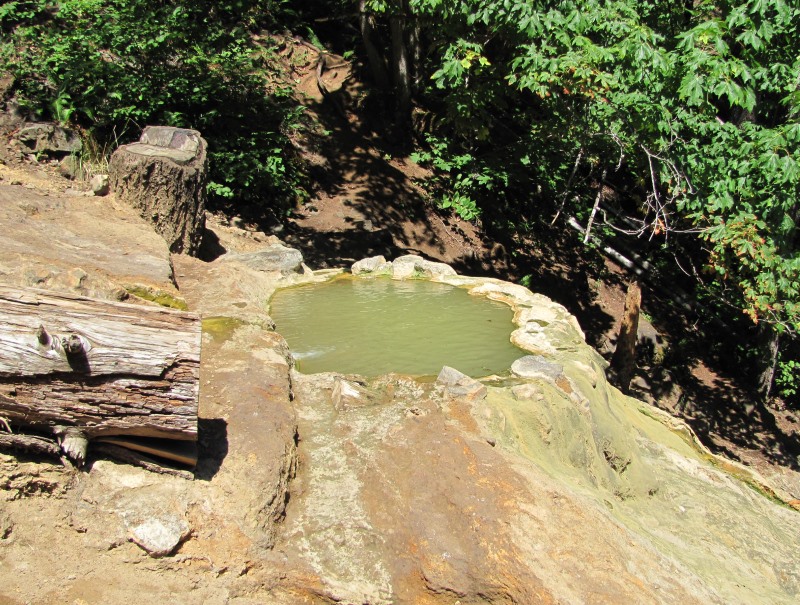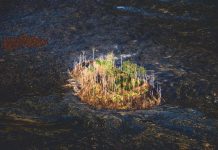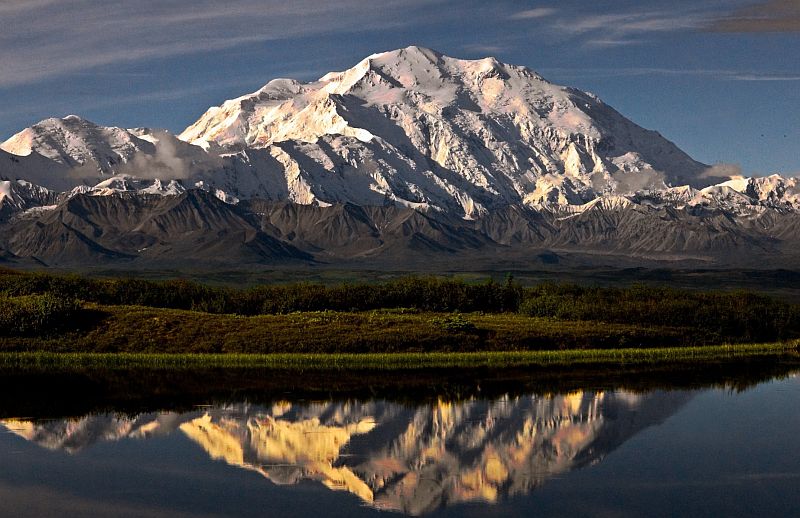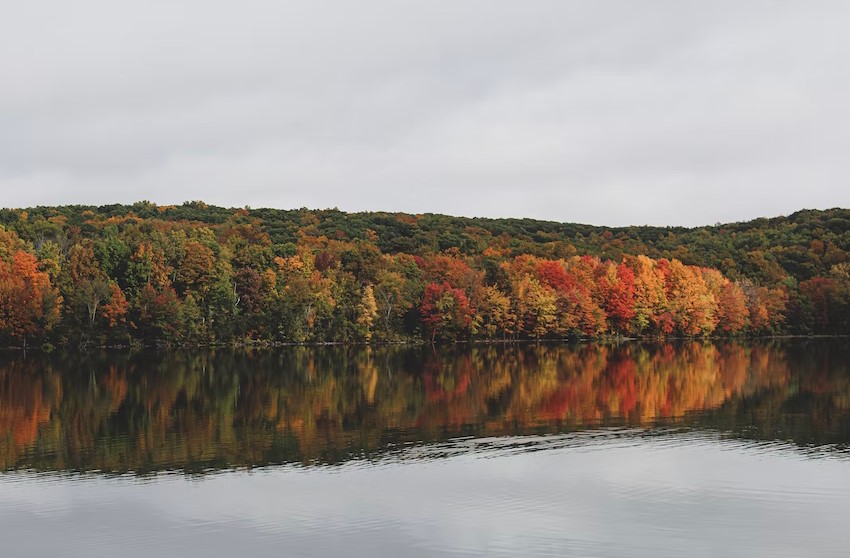The Umpqua Hot Springs are a stunning collection of geothermal springs situated at a height of 2,640 feet along the North Umpqua River in the U.S. state of Oregon. “Umpqua” translates to “dancing water” in the language of the indigenous people that live there. A mesmerizing sequence of tumbling ponds is formed by the hot mineral water that originates from multiple sources and is comprehensibly among the most prevalent in the state. A handful of geothermal hot pools are situated on a cliffside travertine terrace above the thundering river.
There are at least eight soaking pools, the bigger of which has a solid rock bottom and the smaller of which has coarse sand. The bigger one, 5 x 8 feet, encircled by a wooden bridge, has a temperature of 110 °F (43 °C). The depth is around 2 ½ feet.
The upper pool, which is 4 x 5 feet with a temperature of 112 °F (44 °C), is a bit smaller but slightly warmer. This pool has a depth of around two and a half feet. Clothing is optional at Umpqua. The hot springs are only available during the day. At least four distinct indigenous tribe groups have previously exploited the hot springs. The tribes regarded the springs as a no-conflict area and used them for spiritual and therapeutic purposes.
As far as access, the visitors have to follow route #1444 up the Umpqua Hot Springs for 0.3 miles to a soaking pool that is 3’x5’x2.5′ and cut out of the travertine. The North Umpqua Wild and Scenic River is 150 feet below the larger soaking pool, which is encircled by a wooden open-air roof structure. For the trail, there is a $5 use fee. Wintertime may make the springs inaccessible. It is highly recommended to arrive as early as you can, preferably on a weekday morning, if you are going during the summer peak season because they get a lot of visitors. For camping, the visitor needs to stay near the Toketee Lake, only 3 miles, or an 8-minute drive, from the trailhead.
It is believed that Euro-American immigrants arrived here at least 8,000 years ago. Indigenous people established themselves in the Umpqua River region. The Southern Molalla, who resided close to the South Umpqua River’s headwaters, are one of the local indigenous groups. Coastal regions along the Umpqua Estuary, the Smith River, and from the Siltcoos River to Tenmile Creek were home to the Kalawatset, also referred to as the Lower Umpqua tribe. Their language was a variation of the Siuslaw and Coos languages. Along the Umpqua River resided the Upper Umpqua people and the Cow Creek Band of the Umpqua Tribe of Indians.
A typical Oregon area is characterized by bright summers, rainy springs, and snowy winters. April through October are the best months to visit Umpqua Hot Springs because of the pleasant weather and the blooming of wildflowers. Although you might encounter some triple-digit days in the late summer due to warming, it is best to visit between May and September. Due to inclement weather and poor road conditions, Forest Service Road 3401 is closed from November through April due to snow and wildlife risk.
Due to its extreme remoteness, Umpqua Hot Springs is at least 100 miles away from any major Oregon city (or 235 miles one way from Portland). This site is not a day excursion but a great weekend getaway to these hot springs. But since they are only a few hours away from Crater Lake National Park, you may spend a weekend exploring both the hot springs and Oregon’s sole national park. Otherwise, Medford and Bend are your two finest base cities if you have to visit the hot springs for a day trip.
